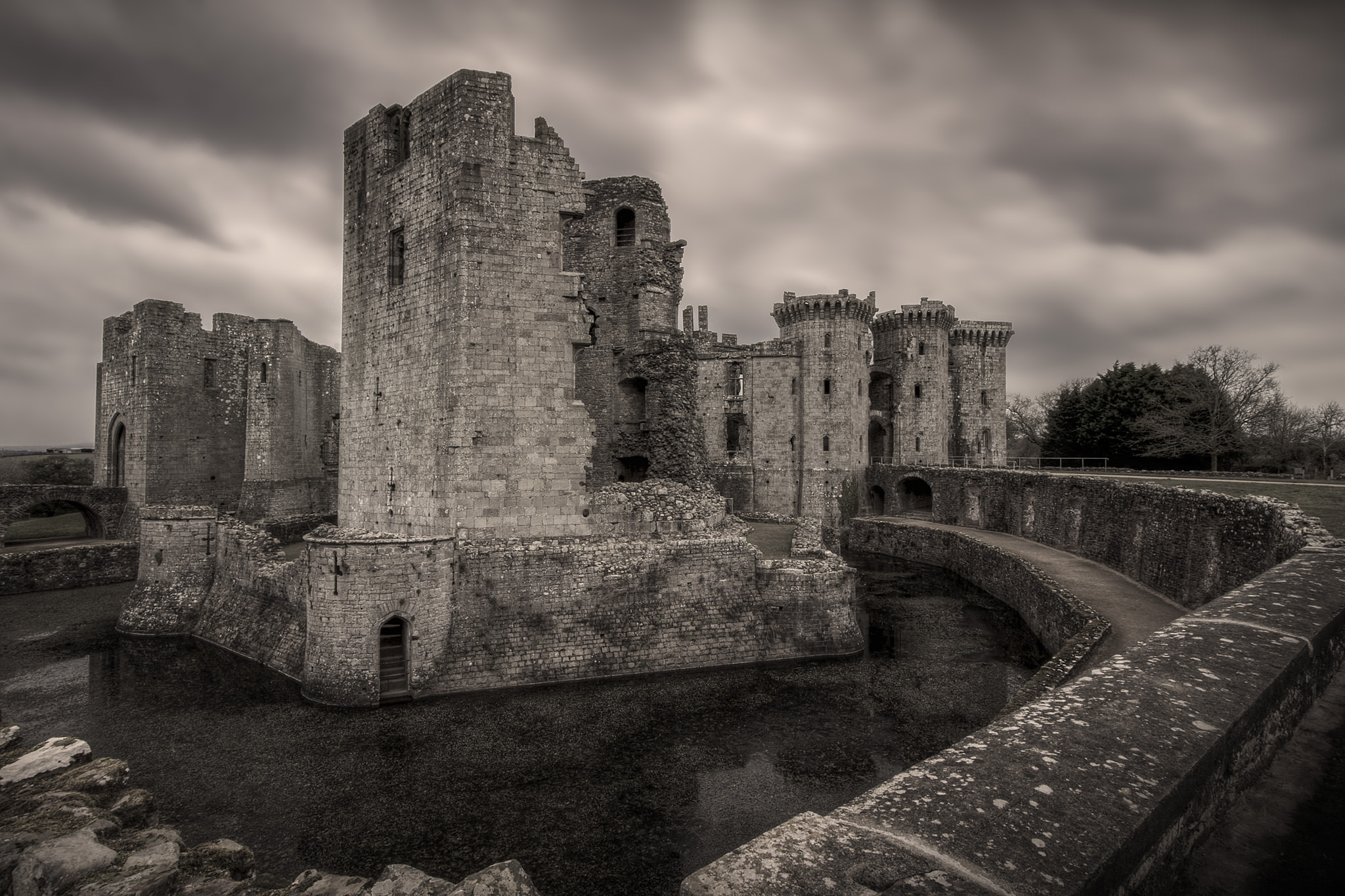Raglan Castle, South Wales



Raglan Castle lies in the Welsh border region. After the Norman conquest of England, the Normans began to advance into Wales. The area around Ragland was in the control of William fitz Osbern at this time. Osbern was Earl of Hereford and the builder of Chepstow Castle. It is uncertain when the first castle was built at Raglan but it may have had a wooden motte and bailey castle in the early Middle Ages.
The present castle sits near the old Chepstow to Abergavenny road, which crosses the Gloucester to Monmouth road. It is suspected that the current castle’s keep may have been built on the site of an early motte and bailey castle.
There are a few surviving documents that tell us something about the early castle. One states that in 1354 it was the custom, that when the Lord of the Manor was in residence, that the Reeve would eat his meals in the Lord’s hall with the other officers of the household. There is also a document from 1375, which discusses minor repair works that were needed following storm damage to the hall, the Lord’s solar and the latrine attached to the solar. There is also evidence that this early castle had a chapel.
At the end of the 12th Century, the then Lord of Chepstow, Richard de Clare, granted Raglan Castle to Walter Bloet. At this time Raglan held the military obligation to Usk. Bloet would have the responsibility of having to provide his overlord the service of one Knight. The Bloet’s male line continued to hold Raglan Castle until the 14th Century when the male line died out and the castle passed to the only daughter, Elizabeth.
Elizabeth Bloet, the Lady of Raglan, took for her husband Sir James Berkeley and he was confirmed as the Lord of Raglan in 1399. He and Elizabeth had a son, named James. Berkeley however died just 7 years afterward. Elizabeth then went on to marry William ap Thomas, who came from a minor Welsh gentry family. It was William ap Thomas who would later build the castle at Raglan which we see today.
Elizabeth died in 1420 and her husband William ap Thomas retained Raglan as a tenant of his step-son, James Berkeley. In 1425 James Berkeley agreed that Thomas could retain Raglan for the rest of his life.
William ap Thomas worked his way up the ranks, having been Knighted after fighting with the English King Henry V at Agincourt. He took for his second wife an heiress, Gwladus, who was the widow of Sir Roger Vaughan. He was appointed Steward of the Lordship of Abergavenny and became the Chief Steward of the Duke of York’s estates in Wales. He became Sheriff of Carmarthenshire, as well as Sheriff of Glamorgan. In 1432, William purchased the property at Raglan from the Berkeley’s and it was after this that he began to build the castle we see today. We know that William ap Thomas built the great keep at Raglan.
William ap Thomas died in 1445 and was succeeded by his son William, who took the surname Herbert, as ‘ap’ meant ‘son of' in Welsh, so he would otherwise have been William ap William.. For his support of King Edward IV in his claim for the crown, he was rewarded with the titles of Chief Justice and Chamberlain for South Wales. He was also granted the title of Baron Herbert of Raglan. Edward IV later granted him the title of first Earl of Pembroke.
In 1462, Herbert became a Knight of the Garter and was granted the wardship of the young Henry Tudor, who lived with the family at Raglan Castle. The prosperity gained however, would not end well. In 1469, he lead an army of Welshmen for King Edward IV, against the Kingmaker Richard Neville, Earl of Warwick. The armies met at the Battle of Edgecote. Earl William and his brother Sir Richard Herbert were both captured. The Earl of Warwick had them both executed in Northampton the next day. The Earl’s body was brought back to South Wales and buried in Tintern Abbey.
After William Herbert’s execution, his heir was his own son William, who was 14 at the time of his father’s death. He was married in name to Mary Woodville, a sister of the Queen, in 1466 when he was all of 11 years old. Upon his death in 1491, Raglan passed to his daughter Elizabeth.
In 1628, Henry Somerset, the Earl of Worcester, inherited Raglan castle. He and his son, Lord Herbert, were involved in the civil war that broke out in England in 1642. Both men were Royalists and loyal supporters of King Charles I. Raglan Castle had one last use as a military stronghold during this time. It was garrisoned with 800 soldiers, the trees outside the castle were cut down and neighbouring buildings destroyed, to avoid Parliamentary forces using them. In the 17th Century, Raglan found itself under siege by Parliamentary soldiers. Raglan finally surrendered and the castle was ordered to be destroyed. In the end however, only a few of the walls were pulled down. Although the castle was returned to the Somersets after the restoration of Charles II, it was not restored or inhabited again.



